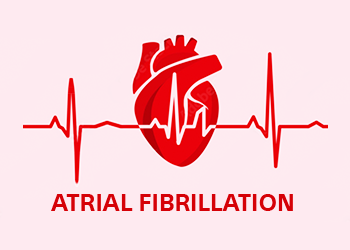
Guardians of the Vascular Realm: Unraveling the Heart Attack-Stroke Nexus
How to treat the risks of heart attack and stroke associated with Atrial Fibrillation?
12 January 2024
Heart diseases have become a prevalent health concern in India, with heart attack and stroke claiming a significant number of lives each year. In this blog, we delve into the distinct aspects of heart attack and stroke, shedding light on the risk factors associated with heart attack and the therapies available to mitigate the risk of stroke, especially for individuals with Atrial Fibrillation.
Heart Attack in India: Unmasking the Reality
Risk Factors:
Several factors easily contribute to the increased risk of heart attack in India. Lifestyle choices, including a diet rich in saturated fats and low physical activity levels, play a pivotal role. The rising cases of diabetes and hypertension in the Indian population add to the vulnerability. Stress, often stemming from the demanding pace of modern life, is another significant contributor.
Reality Check:
Contrary to common belief, heart attack are not exclusive to the elderly. Recent trends indicate a disturbing rise in heart attack among the younger population in India. Sedentary lifestyles, unhealthy dietary habits, and increased stress levels are the primary culprits behind this shift. It is essential for individuals, irrespective of age, to be aware of these risk factors and adopt healthier habits to safeguard their cardiovascular health.
Stroke: A Separate Entity
Risk of Stroke due to Atrial Fibrillation: Navigating the Terrain
Prevalence in India:
In the Indian context, Atrial Fibrillation is on the rise, particularly among the aging population. The prevalence of this condition underscores the need for targeted awareness and preventive measures. Individuals with Atrial Fibrillation need to be aware of the heightened risk of stroke and take proactive steps to manage their health.
Link to Stroke Risk:
The irregular heartbeat associated with Atrial Fibrillation can lead to the formation of blood clots, which, if dislodged, can travel to the brain and cause a stroke. Recognizing the link between Atrial Fibrillation and stroke is essential for individuals with this condition to take preventative measures and work closely with healthcare professionals to manage their cardiovascular health effectively.
Therapies to Treat the Risk of Stroke: Empowering Individuals with Atrial Fibrillation
For individuals with Atrial Fibrillation, managing the risk of stroke becomes paramount. Fortunately, progressions in medical science have led to effective therapies that can significantly reduce the likelihood of stroke in Atrial Fibrillation patients.
Conclusion
Understanding the distinctive aspects of heart attack, stroke, and the specific risks associated with Atrial Fibrillation is crucial for individuals seeking to protect their cardiovascular health. The evolving landscape of cardiovascular diseases in India necessitates a proactive approach towards lifestyle modifications, regular health checkups, and, for those with Atrial Fibrillation, adherence to prescribed therapies. By fostering awareness and embracing preventative measures, we can collectively strive towards reducing the burden of heart-related issues in the Indian population and promoting a healthier, heart-conscious society.
References:
1. https://www.ncbi.nlm.nih.gov/pmc/articles/PMC6515763
2. https://www.mayoclinic.org/diseases-conditions/atrial-fibrillation/symptoms-causes/syc-20350624
3. https://www.ncbi.nlm.nih.gov/books/NBK526072
4. https://my.clevelandclinic.org/health/diseases/5601-stroke
5. https://main.mohfw.gov.in/sites/default/files/Guidelines%20for%20Prevention%20and%20Managment%20of%20Stroke.pdf
Disclaimer: The information presented by Boston Scientific India is for educational purposes only and does not recommend self-management of health issues. The information should not be treated as comprehensive and does not intend to provide diagnosis, treatment or any medical advice. Individual results may vary and hence, it is advisable to consult your doctor regarding any medical or health related diagnosis or treatment options.
IC-1763402AB-1223
Related Articles
Tags
Heart Attack | Stroke | Vascular Realm | Atrial Fibrillation | Risk of Heart Attack | Irregular Heartbeat






